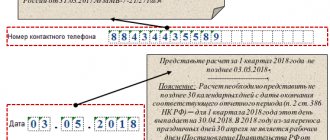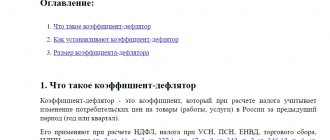Land tax is always classified as local taxes. It is obligatory to pay where local municipal authorities have passed a law introducing it.
The tax on land in settlements is paid by individuals and legal entities who have ownership rights to land plots, as well as rights of perpetual use and rights of lifelong inheritable possession. According to Art. 15 of the Land Code, the property of citizens is land acquired on the grounds provided for by Russian legislation.
Citizens who have rights to gratuitous temporary use are exempt from paying this tax. If a citizen receives a plot of land under a lease agreement (see the link for more details about leasing land in settlements), then he will not pay land tax.
All about land tax
Tax legislation changes quite often; the Tax Code receives new editions more often than other codified acts . Therefore, you should carefully monitor the latest tax changes relevant for 2021. We will talk about them further.
Land tax is a tax paid by individuals or legal entities who own land plots under the right of ownership, perpetual use or lifelong inheritable ownership.
Land tax is a local tax that is introduced and terminates in the territory of municipalities on the basis of regulations of municipal authorities.
This does not mean that municipal authorities have the right to set taxes in any order. All their actions must not violate federal tax laws.
All land plots are recognized as objects of taxation, with the exception of a few mentioned in the Tax Code of the Russian Federation as exceptions.
These include, in particular:
- Land as part of the common property of an apartment building.
- Land withdrawn from circulation.
- Land plots limited in circulation.
For each tax, including land tax, its own tax rates, tax benefits and options for determining the tax base are determined, from which the amount of mandatory payments required for payment will be calculated.
Tax rates are determined by municipalities, and they cannot exceed the established federal values . Rates should not exceed 0.3% of the cadastral value in relation to agricultural land, housing stock and land for personal farming.
For other land plots, a marginal rate of 1.5% of the cadastral value is established.
If taxes are not paid on time, penalties may be applied to the guilty party. Non-payment of taxes in large and especially large amounts generally threatens with criminal liability.
Video on the topic
1. Taxpayers (hereinafter in this chapter - taxpayers) are organizations and individuals who own land plots recognized as an object of taxation in accordance with Article 389 of this Code, on the right of ownership, the right of permanent (perpetual) use or the right of lifelong inheritable possession, if otherwise not established by this paragraph.
In relation to land plots included in the property constituting a mutual investment fund, management companies are recognized as taxpayers. In this case, the tax is paid from the property that makes up this mutual investment fund.
2. Organizations and individuals are not recognized as taxpayers in relation to land plots held by them under the right of gratuitous use, including the right of gratuitous fixed-term use, or transferred to them under a lease agreement.
Concept of tax base
What is the tax base for a land plot is indicated in the country’s Tax Code . With the help of the tax base, the object of taxation, that is, the land plot, is quantitatively expressed.
The tax base is the value on the basis of which the amount of tax is calculated by multiplying the base by the tax rate.
So, what is the tax base for land tax? The tax base for land tax is determined as the cadastral value of the plot as of January 1 of the year that is the tax period.
The specifics of determining the tax base depend on the subject of taxation. There are different rules for determining the final amount of land tax for individuals and legal entities.
The tax base is determined separately in relation to shares in the common ownership of land, if different persons are recognized as taxpayers or different tax rates are established for the land.
Determining the basis for legal entities
The assessment of the tax base by legal entities is carried out independently on the basis of information from the state real estate cadastre for each plot of land that belongs to them by right of ownership or perpetual possession.
The tax is determined minus advance payments based on the results of the reporting tax periods . Individual entrepreneur accountants usually have difficulty paying this tax, since it is not included in the single tax under the simplified tax system. It has to be paid on a general basis, like all enterprises using the general taxation regime.
Since 2015, entrepreneurs pay land tax based on notifications from the tax service without the obligation to independently calculate.
The taxpayer can always look at the cadastral value of a land plot on the Rosreestr website - https://rosreestr.ru/site/, thereby checking the correctness of the submitted receipt.
The cadastral value of other participants in the right of ownership is not determined if the owners of the building located on the land plot, at the same time as the entrepreneur, are:
- government agencies;
- state unitary enterprises.
They usually use real estate under the right of operational management or economic management, which is why they are exempt from paying land tax. The full amount of tax must be paid to the full owner - a legal entity.
Determining the base for individuals
In addition to the right of ownership and perpetual use, individuals can own land on the basis of the right of lifelong inheritable possession . Citizens also receive notifications from the tax service about taxes due on their land plots.
However, it is still worth checking such notifications. Therefore, everyone should know how the tax base for land tax is determined, and what is not the basis for calculating land tax.
You can also find out the cadastral value by writing a request to the Rosreestr office or to the land cadastral chamber at the location of the land plot itself.
An individual receives a tax notice no later than 30 days before paying the tax. Citizens have the right to take advantage of tax benefits for this tax.
What does the tax base depend on when collecting a plot of land? In each specific case, the base and amount of the tax paid will depend on the category of the payer, on the size of the cadastral value of the property, on the possibility of applying benefits or other ways to reduce the tax base.
Ways to reduce the tax base
Many people wonder how to reduce the tax base on a land plot? To do this, first of all, you need to check whether you, as a taxpayer, are a benefit recipient who can completely free yourself from the burden of paying this tax.
The following categories of legal entities are exempt from tax:
- organization of the penal system;
- organizations whose lands are occupied by public public roads;
- lands for religious and charitable purposes;
- public organizations whose lands are used to protect people with disabilities;
- organization of folk crafts;
- residents of special economic zones;
- management companies whose lands are part of Skolkovo;
- shipbuilding companies.
Among citizens, indigenous peoples of the North, Siberia, the Far East and their communities are completely exempt from paying land tax.
All other categories of citizens can only count on a tax deduction in the amount of 10 thousand rubles. Only some municipalities have this right (Moscow, St. Petersburg, Sevastopol).
The following may count on a reduction in the tax base:
- Heroes of the USSR, holders of the Order of Glory;
- disabled children, groups 1 or 2;
- veterans and disabled combat veterans;
- persons exposed to radiation;
- persons who took part in nuclear weapons tests;
- persons who have suffered radiation sickness.
To receive such a tax deduction, a citizen must submit documents confirming his preferential status to the tax service. Moreover, these documents must be submitted to the tax authorities at the location of the land plot before October 1 of the year, which is the tax period.
If the emergence or loss of the right to reduce the tax base occurs before the end of the tax period, documents confirming the emergence or loss of this right are provided by the citizen within 10 days from the date of occurrence or loss.
Benefits are provided for one plot of land for each type of permitted use.
Tax rate
The tax rate is determined by the local municipality. It cannot be higher:
- 0.3% in relation to plots occupied by residential buildings, plots used for agricultural land, plots provided for personal subsidiary plots;
- no more than 1.5% for other areas.
It is possible to establish differentiated tax rates, which depends on the category of land and the permitted use of the land.
Privileges
Benefits for paying taxes on land in populated areas are determined by Article 365 of the Tax Code of the Russian Federation. The following categories of taxpayers are exempt from paying land tax:
- organizations in relation to areas occupied by state highways;
- religious organizations;
- organizations of disabled people;
- institutions of the penal system;
- organizations that are residents of a special economic zone;
- physical persons who are indigenous peoples of the Far North;
- organizations involved in folk arts and crafts;
- management companies.
Local authorities can establish benefits for other categories of citizens: disabled people and large families. When paying taxes, individuals who have benefits must submit to the Federal Tax Service an appropriate application and document that confirms the existence of such a benefit.
Additional nuances of determining the tax base
If a plot of land arose during the tax period, the tax base for it will be determined as the cadastral value as of the date of registration of such a plot for state cadastral registration.
Changes in the cadastral value of land are not taken into account when determining the tax base in this and previous tax periods if the change occurred during the tax period.
But there are two exceptions to this rule. Changes in cadastral value are taken into account in the following situations:
- the change in cadastral value occurred due to a technical error made by the body that carries out state cadastral registration;
- the change in the cadastral value of the land occurred on the basis of a decision of the dispute resolution commission on the results of determining the value or a corresponding court decision.
If the land is in common joint ownership, then the tax base is determined for each of the taxpayers who are the owners of this land plot in equal shares.
The obligation to pay taxes is assigned to each of the taxpayers who own land under the right of ownership or perpetual use.
The amount of tax payable on a land plot is determined on the basis of the cadastral value of the land, the category of taxpayer, the availability of benefits and the possibility of obtaining a tax deduction provided for by law.
Registration
In general, changes in the cadastral value of a land plot during a tax period are not taken into account when determining the tax base in this and previous tax periods (clause 1 of Article 391 of the Tax Code of the Russian Federation). That is, you need to pay tax from the new tax base only from the next tax period, with the exception of two cases:
- when correcting a technical error made by Rosreestr when maintaining the state real estate cadastre;
- when the cadastral (register) value of an object changes based on a decision of the commission for resolving disputes on the results of determining the cadastral value or by a court decision (clause 1 of Article 391 of the Tax Code of the Russian Federation).
A technical error (a clerical error, a typo, a grammatical or arithmetic error, or a similar error) is an error made by the cadastral registration authority when carrying out state cadastral registration and (or) state registration of rights, leading to a discrepancy between the information contained in the Unified State Register of Real Estate and the information in the documents on on the basis of which information was entered into the Unified State Register.
Cadastral (registry error) is an error reproduced in the Unified State Register of Real Estate in the boundary plan, technical plan, map plan of the territory or survey report, which arose as a result of an error made by the person who performed the cadastral work, or an error contained in documents sent or submitted to the registration authority rights by other persons and (or) bodies in the order of information interaction, as well as in other established procedures (Parts 1, 3 of Article 61 of the Federal Law of July 13, 2015 No. 218-FZ “On State Registration of Real Estate”).
A change in the cadastral value of a land plot due to the correction of a technical error made by Rosreestr is taken into account when determining the tax base, starting from the tax period in which the erroneously determined cadastral value was applied.
The cadastral value of a land plot can be changed by decision of a special commission or by a court decision.
Such changes entail a recalculation of the tax calculated based on the cadastral value.
From August 11, 2021, changes introduced by Federal Law No. 269-FZ of July 31, 2021 are in effect.
A rule has been established on the retrospective application of the cadastral value of a property in taxation. If the correction of an error made in determining the cadastral value led to its decrease, then the new value will be extended to the entire period from the date the information on the cadastral value began to be applied.
If the cadastral value increases, its new value will be applied starting next year.
And if there are several cadastral values applied at one point in time, determined for one date, the lowest of them is applied - according to the law on valuation activities.
If the cadastral value is determined in the amount of its market valuation, it should be applied “retroactively” - from January 1 of the year in which the application was submitted and a positive decision was made (but not earlier than the date of registration of the object in the cadastre).
From January 1, 2021, an application to correct errors made in determining the cadastral value can be submitted within 5 years from the date of entering information about the cadastral value into the Unified State Register of Real Estate.
Since January 2021, two cases have been established when land tax needs to be recalculated due to adjustments to the cadastral value.
- The cadastral value of an object changes due to the fact that its market value is established. The tax is recalculated retroactively for all periods during which the variable cadastral value was applied (clause 1.1 of Article 391 of the Tax Code of the Russian Federation).
- The cadastral value changes due to changes in the characteristics of the object. The calculation algorithm is as follows (clause 7.1 of Article 396 of the Tax Code of the Russian Federation):
- for the period from January 1 to the date of change, the tax amount is calculated based on the previous cadastral value, taking into account the coefficient. It is equal to the number of full months that have passed from January 1 to the specified date, divided by the number of calendar months in the tax period. If the change occurred after the 15th day, the current month is considered a full month;
- for the period from the date of change to December 31, the tax amount is calculated based on the changed cadastral value taking into account the coefficient. It is equal to the number of full months that have passed from the specified date to the end of the tax period, divided by the number of calendar months in the tax period. If the change occurs on or before the 15th, the current month is counted as a full month.
Let us remind you: if you own the land for less than a year (for example, several months), then the tax is paid only for these months. Calculate land tax for several months taking into account the ownership coefficient using the formula:
| Amount of land tax for less than a year | = | The tax base | x | Tax rate | x | Number of months during which the plot was registered to the owner / 12 months |




